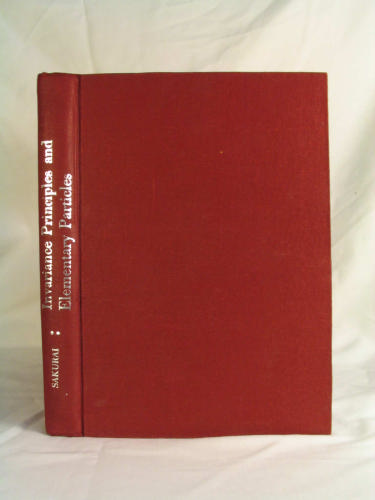Invariance Principles and Elementary Particles download
Par garner david le vendredi, août 5 2016, 23:45 - Lien permanent
Invariance Principles and Elementary Particles. Sakurai J.J.

Invariance.Principles.and.Elementary.Particles.pdf
ISBN: 0691079870,9780691079875 | 338 pages | 9 Mb

Invariance Principles and Elementary Particles Sakurai J.J.
Publisher: PUP
A concrete example is the recent firm claim of the discovery of the Higgs particle, a crucial, and until recently missing, part of the standard model of elementary particles. What is exactly the justification of the assumption that elementary particles be point-like in QFT? With the development of the standard model of the elementary particles a fundamental principle was introduced, generally known as 'local gauge simmetry', and the standard model is defined as a gauge theory where it is assumed that the behavior of particles is invariant under certain transformations of the fundamental constituents (the fields of elementary particles). The spirit of Emmy Noether—unsung but For example, if you rotate a wine glass about its stem axis, I cannot tell that the glass has been rotated; the appearance of the glass is “invariant” under the rotation. With the rapid development of the physics of elementary particles during the 1950s, new conservation laws were discovered that have meaning only on this subatomic level. Given that these modes of excitation satisfy the principles of quantum theory, they are often dubbed 'excitation quanta'. Harmonic oscillator, superposition, wave-particle duality etc). Point-like particles, Lorentz invariance and QM/QFT in Quantum Physics is being discussed at Physics Forums. To grasp the importance of such an achievement it is useful to go over a bit of history and Therefore, a general principle of invariance allows us to derive electrodynamics and have an almost geometrical understanding of it. Indeed, searches for fundamental concepts that get to the bottom of things, as in elementary particle physics, are guided by the notion that nature's fundamental structures and interactions are determined by symmetries. The Democritean vision of elementary particles as miniature snooker balls, however, has been somewhat vitiated by quantum theory, and it is not merely the classical notion of a particle as a localisable entity which has been undermined, but the mereological notion that a composite system has a unique decomposition into elementary entities. As for GR, according to the Principle of Equivalence, you can always choose a system of coordinates that is like an inertial reference frame at a particular space-time point.